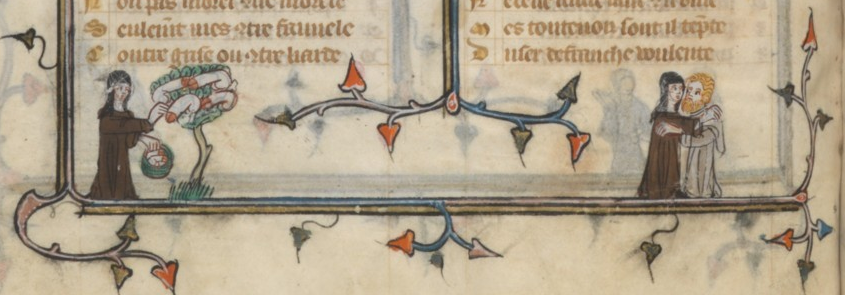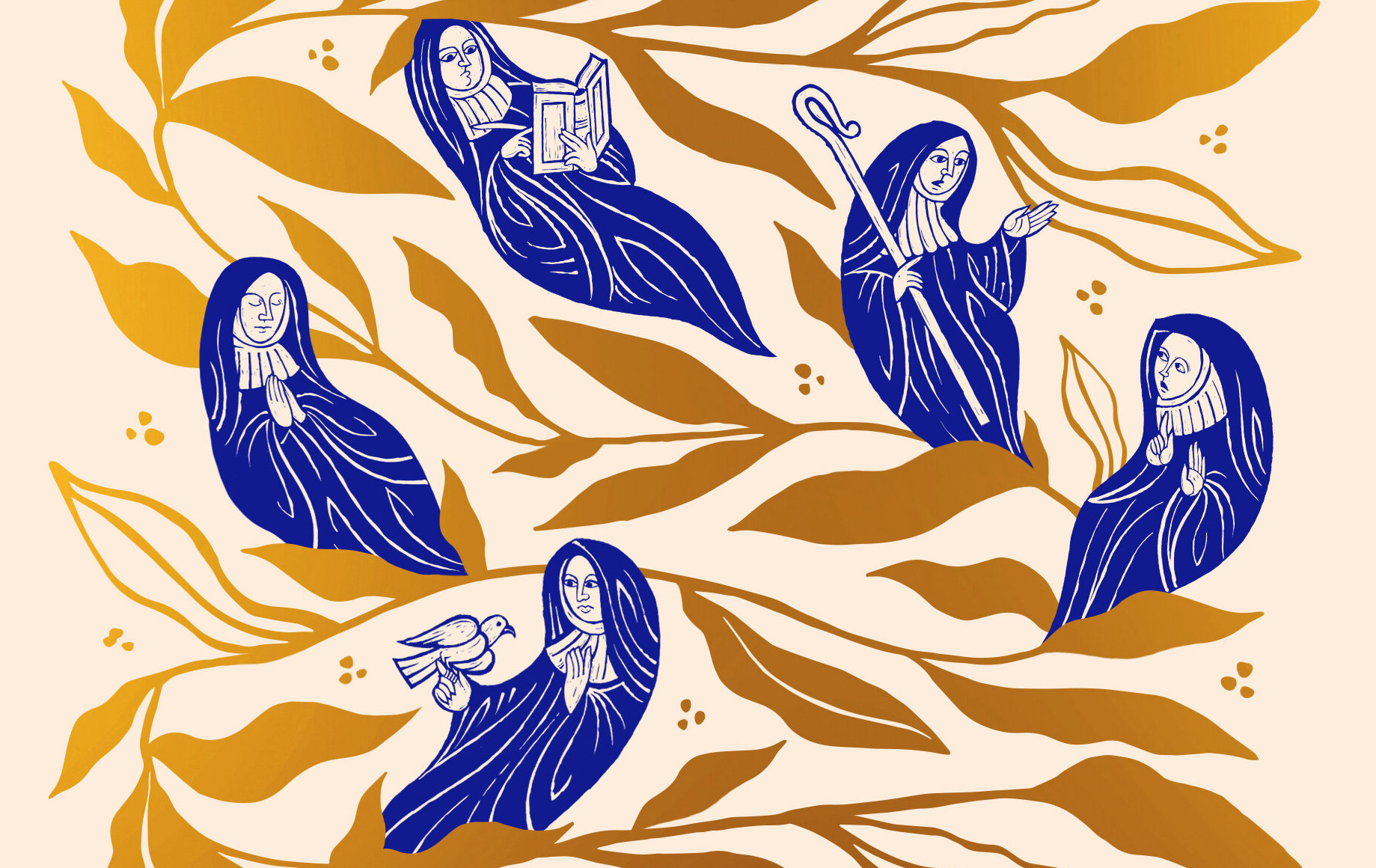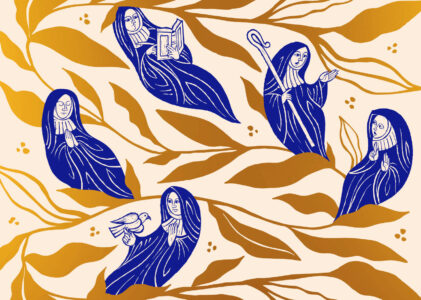Novelists have no particular obligation to the past—or at least, no requirement to recreate it with any kind of fidelity. Just as the makers of historically-inspired TV shows or movies may choose to put more of their efforts into telling an engaging story or conjuring up compelling characters than into researching period-appropriate attire, the writers of fiction are perfectly entitled to make accuracy a lower priority than writing a cracking yarn. I’ve just finished watching (to own the truth: rewatching) HBO’s Our Flag Means Death, a TV show ostensibly set in the Golden Age of Piracy but which is gleefully anachronistic—people walk around in 1717 wearing Crocs and referencing Pinocchio (first published 1883)—and I enjoyed the hell out of it.
So all of that said, why did I find reading Lauren Groff’s recent work of historical fiction, Matrix, such a frustrating experience? It’s a novel which takes a known fact (that in the twelfth century there was a woman known as Marie de France who was the author of a number of lais, or narrative poems), mashes it together with a couple of pre-existing historical theories (that Marie was a half-sister of King Henry II of England, and/or that she should be identified with one of a number of Maries known to have been leaders of monastic communities in England at that time), and runs with it. I spend a lot of time studying the intersections of women, religion, and power in the twelfth century: that set-up should be catnip for me.
And yet it wasn’t.

It’s true that, as Elizabeth Lehfeldt wrote in her review of the novel, that Groff “centers female ambition and imagines a medieval woman making bold decisions that serve her desire to lead her community.” But the further I got into the book, the less I found Matrix a portrait of a community that seemed like the ones which I study. There is a lengthy and growing body of work out there that studies how women religious in the Middle Ages were often highly capable administrators and stewards of monastic estates, and which shows that the walls around their cloisters did not stop these women from being important parts of the social, political, and economic life of the wider world around them. Women religious ran hospitals and kept account books and wrote treatises and maintained sometimes sprawling correspondence networks. Abbesses and prioresses were often regarded with respect by those with whom they interacted.
This isn’t to say that there was never bad governance in women’s houses (even if it wasn’t quite so prevalent as pop culture might have us believe), or that there was no discrimination against women within the institutional church, or that there weren’t small or impoverished communities of women religious. But when I read passages in Matrix such as:
“And Tilde thinks and says that perhaps they can sell their farthest estate, for it is great enough to bring in that sort of coin. Marie will not even look at the prioress when she tells her not to be stupid, land is power and no one is less powerful than a woman religious, and it would be madness to sell what power they have slowly and painfully built in the world.”
I felt my eyebrows rise to meet my hairline. There were in fact many people in the Middle Ages who had less power than a woman religious, and to a great extent that was because women’s communities owned land.

Shaftesbury Abbey—one of the medieval Benedictine houses which has been speculated to have been the residence of the “historical” Marie de France, and the one which Groff also opts for in Matrix—was one of the wealthiest religious communities in all of England at the time of the Dissolution in the sixteenth century. It was so not because it bucked the usual practices of women religious but because it leaned into them. In many ways, Shaftesbury was a highly conventional community. It had royal connections, counted many social elites among its members and donors, had relics enough to attract pilgrims, and Place Farm—the administrative centre for its Wiltshire estates alone—has been described as of “magnificent scale” and “one of the finest surviving groups of monastic grange buildings in England.”
The women of the historical Shaftesbury weren’t powerful in spite of the society in which they lived, but because of it—and nor were they chance outliers.
Yet over and over in Matrix, Groff writes about certain kinds of women—ambitious women, creative women, thoughtful women, women capable of reflecting on the theological implications of both Eve and Mary—as outliers in the Middle Ages. Groff’s version of Marie is in all ways exceptional. She is smarter than most people around her; she is taller, stronger, uglier, more. Her fellow sisters, meanwhile, are pious automatons, unthinking “in their holy darkness with their work and their prayer.” For all its focus on community, Matrix presents us with a bleak and lonely view of these women’s lives, and one which, as Lucy Barnhouse has pointed out, is only feasible if you ignore all of the medieval women whom we know were incisive and ambitious, original thinkers and capable leaders.

Do I find Our Flag Means Death delightful and Matrix frustrating because I know more about monastic estates in the Middle Ages than I do about the Golden Age of Caribbean piracy? Well, perhaps.
Or do I find Matrix jarring not because I’ve read lots of medieval history books and think that Groff got some details wrong, but because I’ve spent a lot of time trying to think about who medieval nuns were as people? There’s plenty to critique and think through in Our Flag Means Death‘s often idiosyncratic approach to eighteenth-century history, but for all the show’s sometimes silly humour, there’s rarely the sense in it that its writers are condescending to the past—or that they’ve lost sight of the fact that their characters should come across like real people.
Matrix reads as a didactic text in ways that Our Flag Means Death does not. For a novel to have a moral point of view is of course no more an inherent failing than it is for a novel to be anachronistic. But I wasn’t sure that Groff had a secure handle on what the book’s core message actually was. There were points in reading Matrix where I got the feeling that Groff was faintly embarrassed by medieval nuns and their failure to be smart enough to invent women’s liberation or political lesbianism or antibiotics. Should a novel that seems premised on a celebratory reclamation of women seem so, well, disdainful of them? Can a reckoning with a figure as intriguing and evocative as that of Marie de France be an honest one if it’s premised on ignoring or rejecting much of what we do know about her? Is a Great Woman view of history, or of the possibilities of the past, particularly feminist?
(My implied answer here, of course, is no—especially given how Groff uses flashbacks to a heavily fictionalised version of women’s involvement in the Second Crusade that wants us to revel in a vision of horse-riding, ass-kicking (white Christian) Amazon ladies without thinking very hard about who, exactly, they were kicking or what the passive voice can conceal.)

While writing up these thoughts, I came across an interview that Groff gave about Matrix. In it, she frames her novel as offering a counterpoint to a historical tendency “to push the female characters to the side in basically every narrative up until about a century ago.” This is a simplification, but one that certainly has a kernel of truth to it. Yet elsewhere in the same interview, when discussing the now internet-(in)famous medieval illustrations of nuns picking phalluses from a tree, Groff explained them as “drolleries […] drawn by bored clerics on the side of manuscripts.”
These illustrations, which appear in a copy of the popular romance Roman de la Rose, were not drawn by some anonymous bored monks. In fact, they were the creation of a woman: Jeanne de Montbaston, an accomplished artist who ran a workshop with her husband in fourteenth-century Paris. There’s a particular kind of irony in promoting a woman-centric work of fiction by pushing a real, flesh-and-blood woman to one side.

